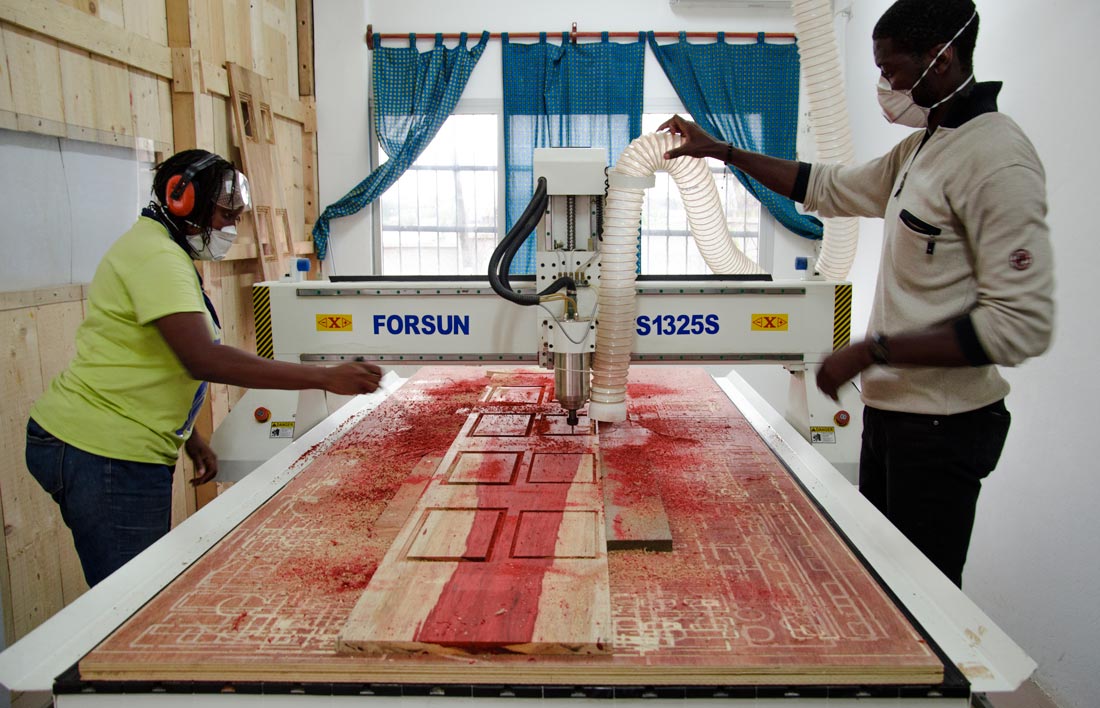500 million people will be living in urban areas in Africa in 2020.
90% of them are still living in slums.UN Habitat
After many years of post-colonial studies on architecture and design, we are investigating the possibility of creating a “local industry” for an ecological habitat in Africa. The [AFH] project bridges the main concepts from the tremendous heritage of African vernacular design with the 1970s experience of J. Prouvé’s Tropical House. With this premise, the AFH is the first low-cost and off-grid housing prototype generating a social scenario
The project follows an applied research agenda developed in collaboration with the African Fabbers School within the framework of the Camon project. The design and fabrication processes are developed in Cameroon in collaboration with the COE and the Laba/Douala through a number of training programs with local students, craftsmen and partners.
The aim of the initiative is to explore a new vernacular design as a paradigm for advanced manufacturing towards sustainable construction systems, which should create circular economies in the African context. The housing prototype is conceived as a flexible space for sustainable living and self-producing, completely realized with local material systems, easy to assemble, customize and replicate.
The built prototype is the result of a theory by practice applied research for a new vernacular architecture: off-grid, affordable and ecological. Therefore, the wooden interlocking primary structure provides a fast deployment modular approach touching lightly on the ground. The roof is conceived for collecting water and energy, integrating photovoltaic panels. The façade system is designed as a porous skin providing passive cooling and ventilation. These construction components were realized with a digitally fabricated paneling system combining different natural materials such as wood, ceramics and bamboo.
The whole design to build process bridges traditional and informal local techniques with digital prefabrication with the aim of developing local industries for ecological architecture in Africa.
The next step will focus on improving the environmental performances of the prototype, while implementing scalable configurations to be developed with local and international institutions. The aim is to respond to the need for an affordable and ecological habitat in the African context.

























